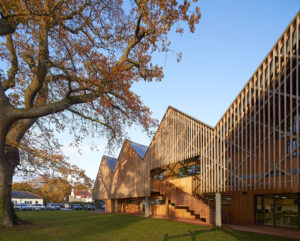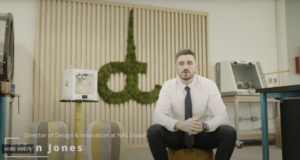For the longest time education was seen as being black and white – children were either “academically inclined” or they weren’t. The only path that seemed to exist for students was one that led from primary education…to secondary education…to higher education and into the world of work. But, in more recent years, the world of education has begun to grow and adapt not only to the needs of each student, also to the needs of the world outside of the school walls.
There are millions of jobs out there, and many have their own unique set of skills that workers are required to learn. Often, these skills cannot be acquired by simply reading about them. This is where vocational learning carves a new path in the education system. Vocational learning takes education from theory into hands on learning.
Not everyone learns in the same way, and so the rigidity of traditional schooling can inadvertently exclude some students, who find straight academics more difficult to grasp.
Moreover, many students who excel in certain subjects may find the pressure of multiple examinations difficult to bear. And so, vocational learning offers a different path. A path that allows students to not only experience subjects first-hand, but also allows them to demonstrate their knowledge with an emphasis on coursework over examinations.
Vocational Education and Training, or VET, is becoming more crucial as the world is changing, placing a greater importance on digital skills such as programming and coding, as well as fulfilling the employment needs of more traditional sectors like building trades, chefs, mechanics and more, that continue to be vital to our society.
There have even been studies that have shown that students who take part in vocational learning go on to higher education at a higher rate (and even have a higher earning potential) than their peers who have not been exposed to this style of learning.
And so, with this changing landscape of education, we must also change our approach to the design and construction of classrooms in order to properly support students as they embark on this new path.
In order to have success in this style of education, classrooms and other learning spaces must be fully equipped to support students. For example, if the focus is on engineering, a classroom may benefit from different “zones” for each aspect of a project. One area may have space for students to explore and share the early stages of ideas on whiteboards and interactive screens – this would then be complimented by a separate space for prototyping and designing, with computers equipped with CAD software, as well as worksurfaces to construct physical models.
Whatever the skills are that you are hoping to build, it is important that students have the correct tools to learn upon to better ease them into the working world. Learning to do a job with the same tools (be they physical or digital) as they would encounter in a workplace will mean that they are better equipped to work alongside industry professionals and the hands-on experience will make them a more attractive prospect to employers in the future.
It’s important, when designing for vocational learning, to consider what different industry workplaces look like in the world outside of education. For example, if a job requires you to work in a lab space, then it is important that students learn to do the job in a lab space as well, so it is key that designers consult industry professionals to properly plan out what these vocational learning spaces will need in order for students to successfully immerse themselves.
While building classrooms specific to different vocations, it is also imperative to ensure that these spaces are flexible, allowing for them to be easily adapted to different projects as well as the ever-changing nature of certain careers. Furniture that can be moved and placed in different configurations is a benefit to roles that are more collaborative, while proper storage and connections are vital for keeping students safe as they learn in more challenging, technological environments.
The heart of VET learning is providing students with a hands-on, authentic and immersive experience of building career skills – but not only for the specific vocations that they may choose. In this style of learning, students also develop more wide-reaching, essential skills for any kind of workplace, such as creativity, communication, collaboration, and critical thinking.
We may not all learn in the same way, but thanks to vocational learning, there is more space for students to learn skills vital to their future, whatever career they may decide on, and the design of these specialised classrooms is an integral part of their success not only for individuals but for the education sector as a whole as the wider workplace continues to evolve.
The Innovation Hub at Nord Anglia School Dubai is a great example of Kidzink’s approach to flexible, multi purpose, practical learning hubs. You can see this amazing space for yourself, here:

